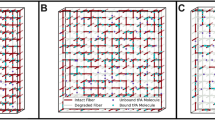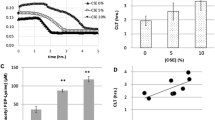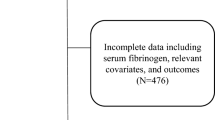Abstract
THE most physiological substrate for fibrinolytic assays is non-heated fibrin. However, the clot formed from ordinary fraction-I, or even from highly purified fibrinogen, is generally heavily contaminated by plasminogen; this interferes with the protease content of the test solution.
This is a preview of subscription content, access via your institution
Access options
Subscribe to this journal
Receive 51 print issues and online access
$199.00 per year
only $3.90 per issue
Buy this article
- Purchase on SpringerLink
- Instant access to full article PDF
Prices may be subject to local taxes which are calculated during checkout
Similar content being viewed by others
References
Lassen, M., Biochem. J., 69, 360 (1958). Astrup, T., and Mullertz, S., Arch. Biochem. Biophys., 40, 346 (1952).
Kekwick, R. A., Mackay, M. E., Nance, M. H., and Record, B. R., Biochem. J., 60, 671 (1955). Laki, K., Arch. Biochem. Biophys., 32, 317 (1951). Ware, A. G., Guest, M. M., and Seegers, W. H., Arch. Biochem., 13, 231 (1947).
Remmert, L. F., and Cohen, P., J. Biol. Chem., 431, 181 (1949). Schultz, R. L., Moorman, J. A., Matorish, L. O., and Lincoln, A. F., Proc. Soc. Exp. Biol. et Méd., 94, 198 (1957).
Dormont, J., Steinbuch, M., Blatrix, Ch., and Weilland, C., Path. et Biol., 7, 2439 (1959).
Author information
Authors and Affiliations
Rights and permissions
About this article
Cite this article
VIGNAL, A., BLATRIX, C. & STEINBUCH, M. Fibrinogen Free of Plasminogen as Substrate for Fibrinolytic Assays. Nature 193, 693 (1962). https://doi.org/10.1038/193693a0
Issue date:
DOI: https://doi.org/10.1038/193693a0



